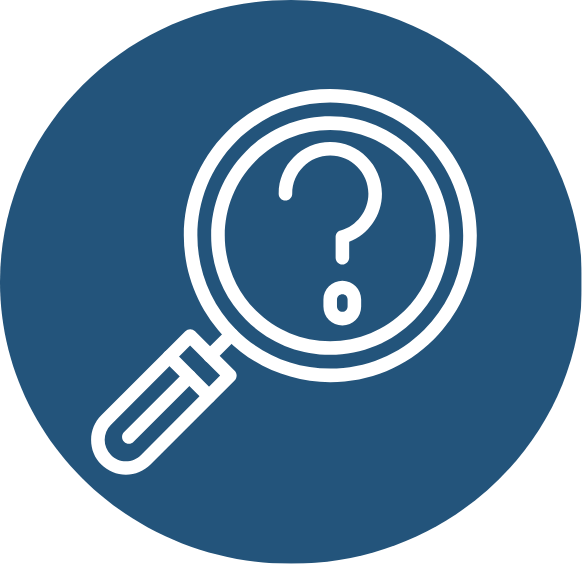OUR CASE STUDIES
-
CASE STUDY 1
Accelerating adoption of an ERP solution
-
CASE STUDY 2
Redesigning a business unit organizational structure
-
CASE STUDY 3
Creating a culture of inclusion and belonging
-
CASE STUDY 4
Mobilizing organizational buy-in for new career paths
Case Study 1
Problem: Accelerating adoption of an ERP solution
Stoneway Automotive, a 2,000-person auto dealership, invested eight figures in Oracle ERP to modernize finance and inventory. But as go-live approached, things unraveled. The system was ready, but the people weren’t. Employees weren’t involved, leaders weren’t aligned, and no one understood how day-to-day work would actually change. Reporting errors spiked. Shadow systems reappeared. Key finance staff quit. The technology was solid, but the adoption was not.
Our Solution
That’s where we came in.
We used our 3-step behavior change framework.
First, we built a clear case for change, reframing the project as a business transformation, not a tech upgrade.
Second, we uncovered hidden resistance through employee interviews and gave leaders messaging that they could actually use.
Finally, we designed training around day-to-day workflows, not just system functionality, and helped managers lead the change on the ground.
The Result
Within 30 days of go-live, 85% of employees were actively using the system, and leadership finally saw the momentum and ROI they’d been waiting for.
Case Study 2
Problem: Redesigning a business unit organizational structure
The online division of a global apparel giant had ridden a wave of success, experiencing multi-billion-dollar growth over several years. However, their success hid the reality that the division had endured multiple leadership changes and had grown faster than the organization could handle. Responsibilities were overlapping, and inventory management was slipping, threatening margins.
The divisional SVP launched a full org redesign to simplify structure and reduce silos. But even after the rollout, things weren’t clicking. The team kept asking, “Who owns what?” and “Why wasn’t I looped in?” Decisions stalled. Trusted leaders were confused. That’s when my client knew something deeper had to change.
Our Solution
That’s where we came in.
First, we built a story that helped employees understand why this redesign mattered, and what it meant for their future. Then, we ran interviews and workshops to uncover resistance and clarify decision rights and workflows. Finally, we gave every employee and manager a transition plan to help them step confidently into their new roles.
The Result
There was clearer role ownership and streamlined workflows in the new structure, and teams reported smoother cross-team decision-making and improvements in inventory forecasting. Most importantly, the Divisional SVP reenergized their team and regained their confidence, preparing the team for the next phase of growth
Case Study 3
Problem: Creating a culture of inclusion and belonging
The CEO of a well-known nonprofit was watching their mission-driven team fall apart as employee turnover was reaching 60%. Morale was low. Exit interviews revealed what they feared most: employees felt overlooked, underpaid, and unsure of their future.
To make it worse, a previous DEI training had backfired. Instead of building trust, it made people feel defensive and confused. That’s when they brought in Amberus Partners.
Our Solution
We approached this like a culture transformation. Here’s what we did:
First, we worked with her executive team to build a clear, credible case for change, rooted in both business needs (reducing costly turnover) and community impact (reaching more people through a thriving team).
Second, we conducted a readiness assessment to understand what was really driving distrust, from recruiting to compensation to career development.
Third, we brought employees, leaders, and even board members into the strategy process. Together, they co-created a DEI vision and 12-month roadmap with clear metrics, shared ownership, and real momentum.
The Result
Leaders and employees were aligned on what DEI meant for their organization. Employees felt energized by visible commitments to equity and advancement
Case Study 4
Problem: Mobilizing organizational buy-in for new career paths
The President of Consulting and VP of HR at a middle market consulting firm knew they had outgrown their current job architecture. The roles no longer reflected the true scope of consultants’ work or experience, which directly impacted how they priced and sold their services. Promotion paths weren’t clear and the existing job architecture couldn’t keep up with the firm’s trajectory. They wanted to design a new job and leveling framework and make sure it actually worked in practice.
The VP of HR knew they needed a new job architecture and leveling framework. But they were concerned about organizational buy-in to the new framework. Would leaders have the confidence to place people into new roles? Would they even believe in the new system? She feared confusion among managers and resentment from consultants if the transition felt vague or unfair. Without shared ownership and trust in the process, even the best-designed structure would fall flat.
Our Solution
That’s where we came in, from the very beginning. Here’s what we did:
First, we invited employees and leaders to participate in design workshops and share their ideas for the new structure. Thereby, giving them a voice in the design of the change.
Second, while we couldn’t reveal the full structure until the end, we hosted regular small forums to provide employees updates on project progress and answer questions.
In addition, we provided people managers with training on how to place their team members in the appropriate new role and confidently communicate the placement to them.
The Result
By the end of the engagement, the VP of HR who had feared hesitation and backlash, instead saw managers stepping into their roles with clarity and confidence. The President of Consulting commented that this was one of the best project rollouts that he had experienced.



